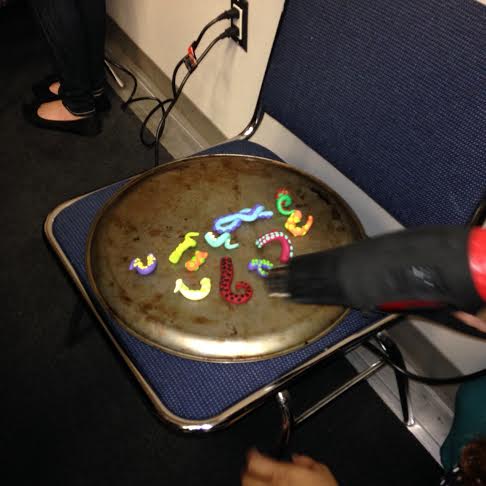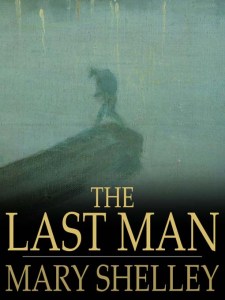 I’m intrigued when any writer blasts their characters out of the Victorian, or other historical era, and into outer space. Edgar Allan Poe did it with The Unparalleled Adventure of One Hans Pfaallin in 1835, Jules Verne followed with The Earth To the Moon in 1865, and in 1901 H. G. Wells wrote The First Men In The Moon. These Regency/Victorian/Edwardian tales offer great inspiration for modern steampunk writers. Jules Verne’s The Earth To The Moon was one of my greatest inspirations for Conquistadors In Outer Space.
I’m intrigued when any writer blasts their characters out of the Victorian, or other historical era, and into outer space. Edgar Allan Poe did it with The Unparalleled Adventure of One Hans Pfaallin in 1835, Jules Verne followed with The Earth To the Moon in 1865, and in 1901 H. G. Wells wrote The First Men In The Moon. These Regency/Victorian/Edwardian tales offer great inspiration for modern steampunk writers. Jules Verne’s The Earth To The Moon was one of my greatest inspirations for Conquistadors In Outer Space.
 I asked the authors of the new book 1889 Journey To the Moon, George Wier and Billy Kring, what inspired them to take their Steampunk story into outer space?
I asked the authors of the new book 1889 Journey To the Moon, George Wier and Billy Kring, what inspired them to take their Steampunk story into outer space?
George: First of all, we really should have been in space (and I’m not talking about NASA or the ESA, I’m talking about ALL of us) a damn long time ago. All we’re doing here is correcting history’s big mistakes. What were those mistakes? Well, we let corporations, governments and bankers decide for us what mankind does–what his future is. You don’t believe me? Well guess what? What if Nikola Tesla had been allowed to finalize his experimentation in ambient free energy and give to the whole world wireless free energy? He was factually shut down by his “friends”. What if every single advance we’ve made in the past 150 years was not snatched up by corporate or government interests, patented, crated and put away in that hangar that comes at the end of Raiders of the Lost Ark? I’ll tell you what, we would be REALLY free. We would be free of economic duress (“Come on honey, let’s forget about working and paying the mortgage and the light bill. We’re going to Arcturus”), we would be free of government suppression (“What border? You mean that imaginary line down there on the planet?”), and we would be free of corporate suppression (“I see IBM and GE stocks finally tanked.” “Oh? What are ‘stocks’?”). You see what I mean? This is the world we SHOULD live in. This is the world we were promised by our Founding Fathers. What happened to it? Well, from my point of view, it was: Industry, the Rise of the Banks and the Federal Reserve, Mechanization, Factories, World War I, World War II, the suppression of “Academics” who now “own” knowledge, etc., etc. What got lost? The family, true entreprenuership, innovation, art, style…all our dreams. No. Here’s the dream, as rough as it may seem. Much of it is contained in 1889. You have to read between the lines, but it’s there. Okay, that’s my short answer.
Billy: My inspiration came about because I wanted to create a sense of wonder and adventure in our readers like I felt the first time I read H.G. Wells and Edgar Rice Burroughs and their space adventures; then we wanted to add some spice, with the characters and the twists and turns of a mystery to it, and all of it occurring in a steampunk universe (George’s idea!). I thought that was a unique twist on the story. In a nutshell, I wanted readers to experience a fantastic adventure unlike anything they’d experienced before.
Maeve: Of course the next thing any writer thinks about when putting characters in outer space is world building. I kept the world building in Conquistadors In Outer Space simple because the plot was so quirky, the concentration on the book is the relationship between the characters, and it’s short – a novella. So I pulled from the history of the DeSota North America expedition, the physical makeup of the eyes of some insects, and how to ride an ostrich, then I transferred that over to this alien planet with strange creatures and humanoid natives.
I asked Billy and George what they thought was the hardest thing about creating a Steampunk universe and what are the challenges and advantages of writing steampunk fiction?
 George: I dunno. I don’t think it’s hard. Take a concept and run with it and let it live and breathe and think and it’ll start doing stuff all on its own. That’s kind of what happened with 1889.
George: I dunno. I don’t think it’s hard. Take a concept and run with it and let it live and breathe and think and it’ll start doing stuff all on its own. That’s kind of what happened with 1889.
For me the challenge is not to copy the Masters. You have to strike out in your own direction, and you have to be sure of yourself completely. After that, the world opens up and you can do anything, by which I mean…ANYTHING. There are no limits. You can alter time, speed up the harvest and teleport yourself off this rock. We did that with this book. Yeah. That’s the haps.
 Billy: I agree with George, writing 1889 was not hard in the sense of storyline, etc. It practically pulled me along. I guess if anything could come to mind, as far as being difficult, it would be that the way we wrote it made me wonder at times how I was going to proceed. And the way we wrote it was, one of us would take the story and write without talking to the other, then send it forward, and the other would start, using the same method. That meant when either one of us received the manuscript again, there were always plot twists and unexpected happenings that made us (at least me), keep my game at a high level, so to speak. No way to get lazy with these! So it was a little hard, but in a good way.
Billy: I agree with George, writing 1889 was not hard in the sense of storyline, etc. It practically pulled me along. I guess if anything could come to mind, as far as being difficult, it would be that the way we wrote it made me wonder at times how I was going to proceed. And the way we wrote it was, one of us would take the story and write without talking to the other, then send it forward, and the other would start, using the same method. That meant when either one of us received the manuscript again, there were always plot twists and unexpected happenings that made us (at least me), keep my game at a high level, so to speak. No way to get lazy with these! So it was a little hard, but in a good way.
The challenge: Telling a unique story in a familiar universe. The advantages: It frees the writer completely.
Maeve: I have never collaborated with other authors so my curiosity was aroused by George Wier and Billy Kring’s collaboration of 1889 Journey To the Moon. I asked them what method did they you use for their collaboration?And if there was anything they took away from the experience that helped make them a better writer or the story a better story?
George: We emailed the book back and forth. I think I gave Billy the basic concept, told him in a general way where I wanted to go with it, wrote the first few pages, then handed it off to him. Whoa! Ten thousand or so words later it comes back. I read it with gusto and I was off like a shot–another 10-15k words, then back to Billy–20k words. I mean, whoa! Back and forth, back and forth. It was done within a few months. One of the fastest things I’ve ever done in my life.
The secret is to find the right collaborator. (Wink!) Okay, all kidding aside, you have to be able to have fun with the project. You also–and for some folks, this is going to be an extremely difficult concept–must be willing to put the thing in your partner’s hands for a given length of time, give them your blessing and let them run with it. I mean, really. Who would have thought? Trust? Another author? Trust them not to mess up your book? Yes. That’s exactly what I’m saying. It’s because it’s a c-o-l-l-a-b-o-r-a-t-i-o-n. It’s not just yours. You really, absolutely and unequivocably have to make sure they make it there’s! I can do that now, for sure. But really, you have to be able to do it even before you “know” for sure. Also, I took away from this experience a much broader horizon. I could have never, not once in a million years, come up with some of the characters, the situations, the description, the dialogue, and the concepts that Billy Kring came up with. The man’s a frickin’ genius. So I suppose the real (REAL) thing here is to find someone who is either better than you are, or is potentially better than you are. Yeah, what I got out this collaboration with Billy is a new way of looking at things. Anything can happen–and will–in a steampunk adventure. There are no rules. That’s the truth.
Billy: What George said!
It helped that George and I were friends before we collaborated. And he is the one who thought we would be a good writing match for the story. He’s outstanding at looking at an idea from about five thousand different angles and seeing which way is best to proceed. He was the leader in this from start to finish. And I agree with him, we wanted to make it fun for each of us to write, and to trust each other. That was a big thing for both of us. The other thing that happened almost from the first, was the story became magic, and each of us couldn’t wait to get the story back from the other and read how our adventure was going. The energy from that was amazing. George is one heck of a writer, too, and that made me give it my best. Some of the passages he wrote were scenes I could never have written, would never have thought about going the way the took it, BUT, that is why it is so entertaining, too. There are surprises throughout the story, and that will make readers happy.
 Maeve: Though I have several published books under the pen name of Cornelia Amiri, I only have two Stemapunk books, To Love A London Ghost and Conquistadors In Outer Space available now but I plan to release Brass Octopus and re-release As Timeless As Stone and As Timeless As Magic later this year.
Maeve: Though I have several published books under the pen name of Cornelia Amiri, I only have two Stemapunk books, To Love A London Ghost and Conquistadors In Outer Space available now but I plan to release Brass Octopus and re-release As Timeless As Stone and As Timeless As Magic later this year.
I asked George and Billy what other published works they had and what was next for them?
George: Plenty. First there’s the Bill Travis Mysteries, a series of 8 books (so far) based in Austin, Texas. They are wild rides, all mystery commingled with action-adventure, and a little sci-fi occasionally thrown in. Additionally, there’s Long Fall From Heaven (Cinco Puntos Press, 2013), and various short stories.
The continuation of this series, with the sequel, 1899: Journey to Mars, 1904: Journey into Time, and 1909: Journey to Atlantis. That’s first. I’m currently working on 7 major projects contemporaneously, including the next two Bill Travis books, a sci-fi collaboration with Robert A. Taylor entitled The Vindicators 2: Parsec, a multi-layered, almost Neal Stephenson-esque blockbuster about the Austin legal community entitled Personal Injury, and a number of others. I would, however, like to specifically say something about 1899: Journey to Mars. If 1889 was fun (let me tell you, it was a total blast!) then 1899 is warp drive. The Tesla robot fighting the evil Westinghouse robots, the characters (many of whom you will recognize both from actual history and from fiction) interacting, walking and talking and shooting down vampire singleship spaceships. Wow. You’re all in for a treat. Hey, you asked.
Billy: Yes. Two suspense novels in my Hunter Kincaid series, QUICK, and OUTLAW ROAD, and one romantic suspense novel, WHERE EVIL CANNOT ENTER (under B.G. Kring). My other mystery/suspense series (The Ronny Baca series) will begin very soon with the release of BACA.
To continue on our other books in the series, and write my other novels, as well as writing screenplays and acting.
Maeve: Before I left Billy Kring, and George Wier I asked them to describe their writing in three words.
George: “Hot and Heavy.”
Billy: Lean and mean.
Here’s the blurb : I’m back in a time that never was–it’s 1889, and eleven people are on a strange steam-powered spaceship to the Moon. Included in the crew are such unlikely passengers and crew as: Billy The Kid, Nikola Tesla, Jack The Ripper, a Sioux warrior out for the blood of George Armstrong Custer (who did not die at the Little Bighorn), a Cossack warrior-princess, a battery of robots, a half-man and half-cyborg engineer, a Punjabi mathematician and linguist, a big-game hunter from Africa, and the grandson of Blackbeard the Pirate, not to mention the genius who designed the ship. There are aliens on the Moon with evil intentions, the robots are wound a little too tightly, and no one knows that the Ripper is along for the ride except for the Londoner himself. What could possibly go wrong?
Here are their calling cards: George’s Facebook Author Page FB page for 1889: Journey to the Moon Twitter: @billtraviswrite Wordpress: www.georgewier.wordpress.com Billy’s Links: www.billykring.com
~ ~ ~
Maeve Alpin, who also writes as Cornelia Amiri, is the author of 19 books. She creates stories with kilts, corsets, fantasy and happy endings. Her latest Steampunk/Romance is Conquistadors In Outer Space, which is as crazy and as entertaining as it sounds. She lives in Houston Texas with her son, granddaughter, and her cat, Severus. Maeve Alpin will be at Comicpalooza in Houston this weekend please stop by her panels there.
Read Full Post »
 Dickens Christmas on the Strand, held in Galveston Texas, is full of old fashioned Holiday fun. So lasso up the kids and heard then down to the strand.
Dickens Christmas on the Strand, held in Galveston Texas, is full of old fashioned Holiday fun. So lasso up the kids and heard then down to the strand.  Tossing knives while ridding a unicycle … fun fun fun. Of course I won’t be trying that anytime soon
Tossing knives while ridding a unicycle … fun fun fun. Of course I won’t be trying that anytime soon A highlight of Dickens On the Strand is the Victorian Bed Races. The beds have to be Victorian style with head and foot-boards.
A highlight of Dickens On the Strand is the Victorian Bed Races. The beds have to be Victorian style with head and foot-boards. 











 Once the new rider
Once the new rider  is on the bed, the team races to the finish line. Awards are given for the fastest time and the best decorated.
is on the bed, the team races to the finish line. Awards are given for the fastest time and the best decorated. Though I haven’t written any western themed Steampunk yet, I live in an area where western Steampunk costumes and personas are popular. I live in Texas. Here are some Western themed photos from members of Houston’s local Steampunk community.
Though I haven’t written any western themed Steampunk yet, I live in an area where western Steampunk costumes and personas are popular. I live in Texas. Here are some Western themed photos from members of Houston’s local Steampunk community.
















 Remember a little bit will go a long way. You can meld the colors together for an interesting effect. If you accidentally get Rub ‘n Buff on an area you don’t want to, just smear a different color of Rub ‘n Buff over it.
Remember a little bit will go a long way. You can meld the colors together for an interesting effect. If you accidentally get Rub ‘n Buff on an area you don’t want to, just smear a different color of Rub ‘n Buff over it. Everyone at the Twisted Gears Make & Take did a smashingly brilliant job on their guns and were pleased as punch with the results. You can make a steampunk gun just as easily. Find guns like the ones your characters use in your books and Steampunk them as props for your own outfits or as giveaways for your readers. Readers love to receive items their favorite authors actually made. Transforming these guns is also a lot of fun.
Everyone at the Twisted Gears Make & Take did a smashingly brilliant job on their guns and were pleased as punch with the results. You can make a steampunk gun just as easily. Find guns like the ones your characters use in your books and Steampunk them as props for your own outfits or as giveaways for your readers. Readers love to receive items their favorite authors actually made. Transforming these guns is also a lot of fun.  February is a party month, a birthday party month that is for many great 19th century writers, scientist, and innovators, who had a huge impact on the Victorian era and beyond:
February is a party month, a birthday party month that is for many great 19th century writers, scientist, and innovators, who had a huge impact on the Victorian era and beyond: Levi Strauss, inventor of blue jeans, February 26, 1829
Levi Strauss, inventor of blue jeans, February 26, 1829 And in Houston, Texas on February 8th we partied like it was 1849, celebrating the 165th birthday of the Father of Science Fiction,
And in Houston, Texas on February 8th we partied like it was 1849, celebrating the 165th birthday of the Father of Science Fiction, 
 1865 – From the Earth to the Moon -De la terre à la lune
1865 – From the Earth to the Moon -De la terre à la lune
 1879 – Tribulations of a Chinaman in China – Les Tribulations d’un chinois en Chine
1879 – Tribulations of a Chinaman in China – Les Tribulations d’un chinois en Chine











 I had such a pleasant day at the Mad Hatter tea party, I half believe I went to Wonderland rather than Herman park. I wish you could have been with us Lewis Carroll…and Happy Birthday.
I had such a pleasant day at the Mad Hatter tea party, I half believe I went to Wonderland rather than Herman park. I wish you could have been with us Lewis Carroll…and Happy Birthday.





